HHS Funds Creation of Two Lab-Engineered Influenza Pathogens Capable of 100% Airborne Transmission in Mammals: bioRxiv
Researchers at Emory University created two synthetic influenza constructs under NIH contract, using reverse genetics to model airborne spread between ferrets.
The U.S. Department of Health and Human Services (HHS) has funded the development of two laboratory-built influenza virus constructs that, under specific experimental conditions, are described by researchers as spreading through the air with 100% efficiency between mammals, according to a March 2025 bioRxiv preprint.
This follows DARPA-funded researchers—backed by BARDA, NIAID, and CDC—now proposing airborne aerosol infection of humans with influenza A(H3N2) after intranasal methods failed, reviving concerns tied to DARPA’s prior DEFUSE proposal to spray engineered agents over human populations via drones.
The new constructs were created using reverse genetics, a method that allows scientists to reconstruct virus-like genetic material from known sequences.
These particular constructs were based on what researchers identify as historical pandemic strains: the 2009 H1N1 and the 1968 H3N2 influenza viruses.
“The viruses used in this study were generated by reverse genetics and minimally passaged (1968 for H3N2 and 2009 for H1N1),” the study reads.
Follow us on Instagram @realjonfleetwood & Twitter/X @JonMFleetwood.
If you value this reporting, consider upgrading to a paid subscription.
The authors are affiliated with federally funded research centers at Emory University and Penn State.
Their listed affiliations include:
Graduate Program in Population Biology, Ecology, and Evolution, Emory University
Department of Veterinary and Biomedical Sciences, The Pennsylvania State University
Department of Microbiology and Immunology, Emory University
Emory Center of Excellence for Influenza Research and Response (Emory CEIRR)
Department of Biology, Emory University
The work was performed under NIH Contract No. 75N93021C00017, awarded to Emory University in Atlanta by the National Institute of Allergy and Infectious Diseases (NIAID), a division of NIH.
The Principal Investigator is Dr. Walter Orenstein, with Dr. Anice Lowen serving as Co-Principal Investigator.
Dr. Orenstein served as Deputy Director for Immunization Programs at the Bill & Melinda Gates Foundation from 2008 through 2011.
According to NIH records, Emory University has received over $27 million in taxpayer funding under this contract between 2021 and 2025.
Funded projects include “Avian Influenza Research Activities,” “Universal Influenza Vaccine Research Activities,” and “SARS-CoV-2 Research Activities,” with individual awards ranging from $184,160 to $5.4 million.
In the airborne transmission experiments, ferrets—commonly used in flu studies due to similarities in respiratory biology to humans—were used as test subjects.
Ferrets classified as “index animals” were given varying doses of the lab-made constructs, then housed in cages adjacent to unexposed animals with shared airflow but no physical contact.
“Airborne transmission was assessed from index ferrets to contacts using inoculation doses from 100 to 10⁶ TCID50.”
Researchers tracked viral shedding in the animals to determine exposure outcomes:
“We considered an animal to be infected if viral shedding over the limit of detection (10¹ TCID50/mL) was observed at any sampled timepoint.”
In several test groups, every single exposed animal was labeled as infected, leading the authors to report 100% airborne transmission efficiency in those experiments.
“The transmission efficiency for each experiment is listed in Figure 1. For H1N1, it ranges from 75–100%; for H3N2, it ranges from 33–100%.”
The shedding measured was not directly linked to illness in the study, and the authors did not confirm whether the detected material caused symptoms.
The use of such markers as proxies for infection, while standard in virological research, remains a point of scientific discussion—particularly regarding whether such genetic material alone constitutes proof of disease transmission, regardless of one’s view on viral causation.
To assess pandemic potential, researchers applied a statistical model to estimate R₀, the basic reproduction number, which measures the average number of secondary cases one infected subject might cause in a theoretical population.
“The R₀ estimated for the H1N1 virus exceeds one in almost all of the simulations… indicating that… the H1N1 virus would have pandemic potential whereas the H3N2 virus would not.”
The authors also explored how future mutations might increase the theoretical spread of these constructs:
“Mutations which increased viral titers in H3N2 infected individuals to the level of H1N1 would close the gap in transmission potential between these viruses.”
In simpler terms, the study suggests that if H3N2 were altered to produce higher concentrations of what is labeled as viral material, its spread could match that of the H1N1 construct.
The authors acknowledged the limitations of using ferrets to model human transmission:
“Ferrets are not humans. Results based on transmission experiments in ferrets are only relevant… if transmission potential in ferrets reflects transmission potential in humans.”
They also noted that the H3N2 strain was passaged multiple times in monkey cells and chicken eggs before testing—procedures that may have introduced changes affecting transmissibility:
“The A/Hong Kong/1/1968 stock was passaged three times in monkey cells and three times in eggs prior to plaque purification… Substitutions that occurred during this process could therefore explain the apparent discrepancy between the transmission of this virus in humans… and in ferrets.”
The study does not discuss the potential risks of accidental release or offer commentary on the ethics of engineering airborne-transmissible virus constructs in the lab.
It also does not investigate whether the measured shedding correlates with disease symptoms in animals or humans.
Still, the authors assert that their approach could help prioritize which emerging influenza strains should be subject to enhanced surveillance:
“We suggest that our approach will be most useful for comparing the pandemic potential of different influenza viruses circulating in non-human reservoirs.”
Yet buried beneath the modeling jargon and funding gloss is a sobering fact: U.S. taxpayers are now financing the synthetic resurrection and enhancement of airborne-transmissible virus constructs that may never have posed a natural threat—without public debate, and without proof that what’s being measured causes disease.
Follow us on Instagram @realjonfleetwood & Twitter/X @JonMFleetwood.
If you value this reporting, consider upgrading to a paid subscription.
For advertising & sponsorship opportunities reaching 230,000+ monthly viewers, contact us by clicking below.
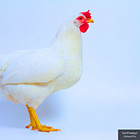





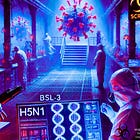


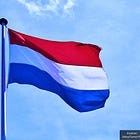
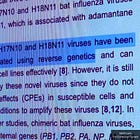



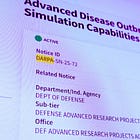
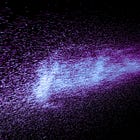
Precisely why I have a nebulizer with chlorine dioxide ready!
Thank you, Jon.,
BE AFRAID!!! BE. V-E-E-E-R-Y A-F-R-A-I-D!!!!! As a reminder: Lab experiments could NOT get SARS-CoV 2 to spread from ferret to ferret or primates. Sasha Latypova--bless her twisted li'l Roosky heart-- went over these facts sometime in the last few years. Conclusion: "They" are SPRAYING us with made-in-a-lab toxins.